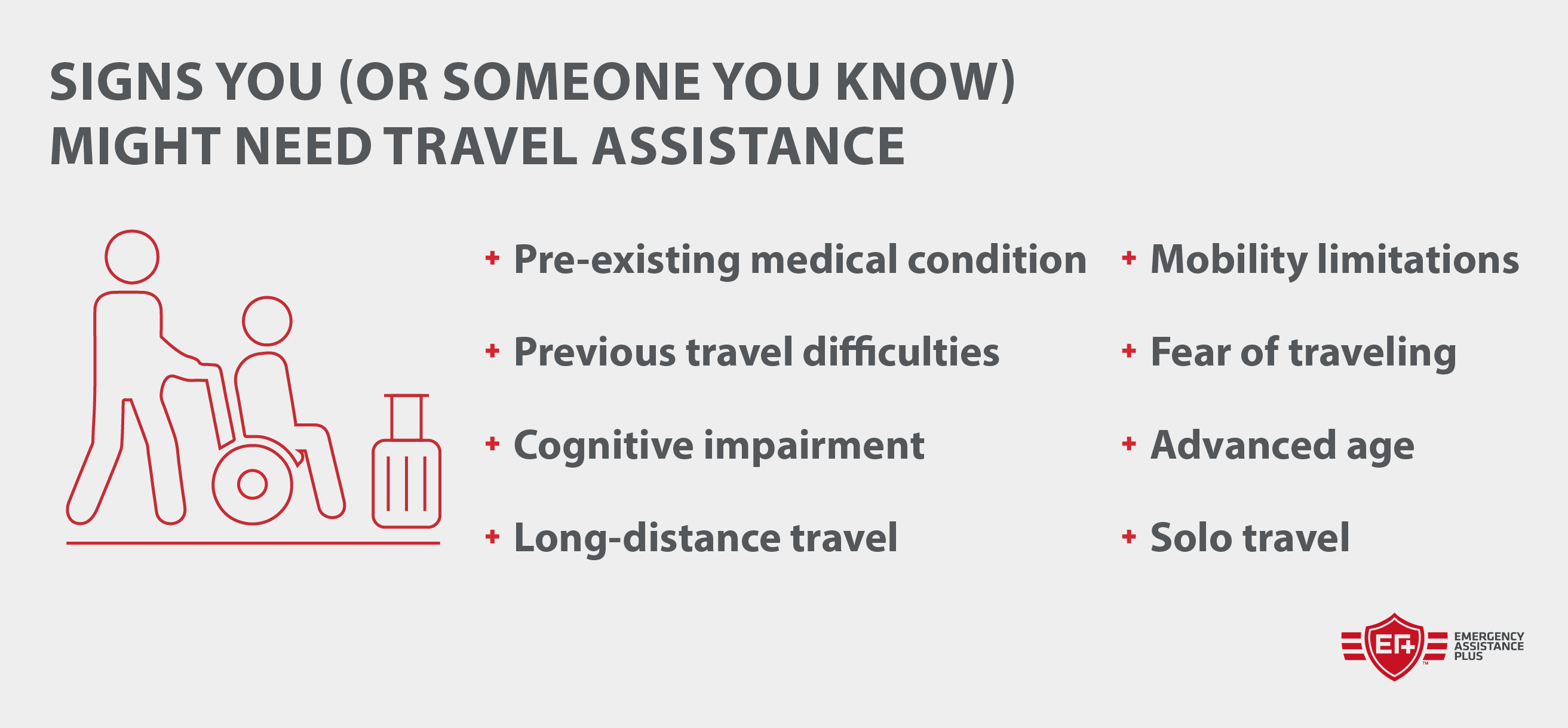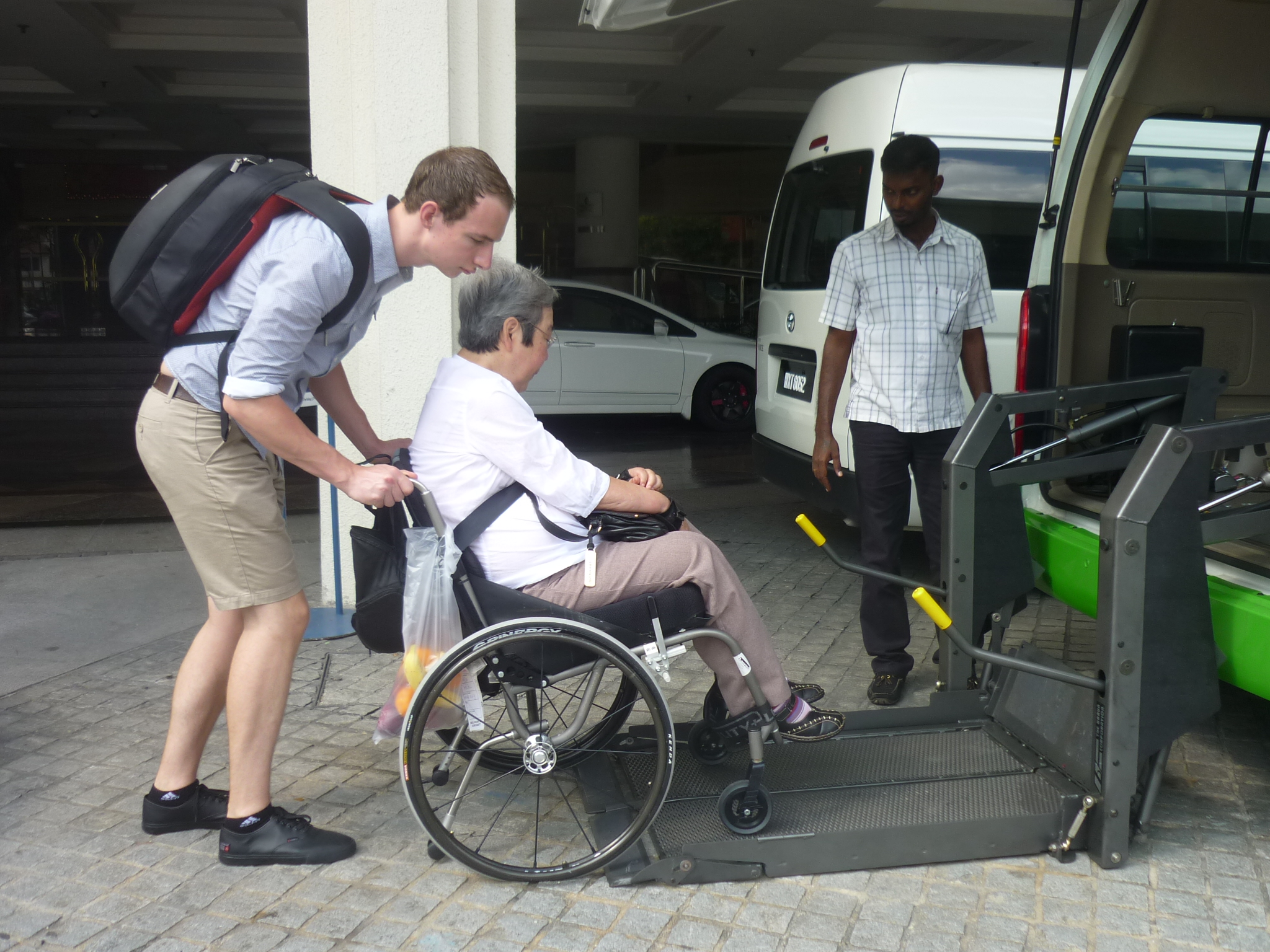Assisted travel for elderly individuals is experiencing a surge in popularity, reflecting a growing need for accessible and safe travel options for seniors. This burgeoning sector offers a range of services designed to cater to the diverse needs and preferences of older travelers, from independent assistance to fully escorted tours. Understanding the available options, potential challenges, and best practices is crucial for ensuring a smooth and enjoyable travel experience for this demographic.
This guide delves into the various aspects of assisted travel for the elderly, providing a detailed overview of service types, accessibility considerations, cost management, planning strategies, communication protocols, and post-travel support. We will explore different transportation methods, safety precautions, budget planning techniques, and the crucial role of communication in ensuring a positive travel experience for senior citizens. The aim is to empower both seniors and their families with the knowledge needed to plan and execute safe, comfortable, and fulfilling journeys.
Accessibility and Safety Considerations
Choosing assisted travel services for elderly individuals requires careful consideration of accessibility and safety features to ensure a comfortable and secure journey. The specific needs will vary greatly depending on the individual’s mobility level, health conditions, and personal preferences. Failing to adequately address these factors can lead to significant risks and potentially negative travel experiences.
This section details key safety features, potential risks associated with different travel methods, and best practices for ensuring the well-being of elderly travelers. Understanding these aspects is crucial for both service providers and families arranging travel for their loved ones.
Safety Feature Checklist for Assisted Travel Services
A comprehensive checklist should be used when evaluating assisted travel services. This checklist should be tailored to the individual’s specific needs, but should include the following key elements to mitigate potential risks and ensure a smooth journey.
- Transportation Accessibility: Wheelchair accessibility on all modes of transport (airplanes, buses, trains), ramps, elevators, wide doorways, and appropriate seating.
- Trained Personnel: Availability of trained personnel capable of assisting with mobility, medication management, and emergency response. This includes staff proficient in handling medical emergencies and familiar with the specific needs of elderly travelers.
- Accommodation Accessibility: Ensuring accessible hotel rooms or accommodations with features like grab bars, roll-in showers, and adjustable beds. Confirmation of the room’s accessibility features should be verified in advance.
- Emergency Preparedness: Clear protocols for handling medical emergencies, including readily available first-aid kits, emergency contact information, and a plan for contacting local medical services.
- Communication Systems: Easy access to communication systems, such as readily available phones or communication devices, for contacting family, caregivers, or emergency services.
- Insurance and Documentation: Comprehensive travel insurance covering medical emergencies, trip cancellations, and lost luggage, along with readily accessible copies of all necessary medical records and travel documents.
Potential Risks and Mitigation Strategies
Different travel methods present unique risks. Proactive measures can significantly reduce these risks, ensuring a safer journey for elderly travelers.
- Air Travel: Risk of falls during boarding and disembarking, fatigue from long flights. Mitigation: Pre-booking wheelchair assistance, arranging for assistance with luggage, and allowing ample time for transfers. Choosing direct flights to minimize potential disruptions.
- Road Travel: Risk of motion sickness, discomfort from long journeys. Mitigation: Choosing comfortable vehicles with ample legroom, planning frequent rest stops, and considering medication for motion sickness if needed.
- Cruise Travel: Risk of falls on uneven surfaces, difficulty navigating stairs and ramps. Mitigation: Selecting a cruise line with accessible amenities, utilizing mobility aids provided by the cruise line, and booking accessible cabins.
Best Practices for Ensuring Safety and Well-being
Implementing these best practices helps minimize risks and enhances the overall travel experience for elderly individuals.
You also can investigate more thoroughly about aarp travel guide to enhance your awareness in the field of aarp travel guide.
- Pre-Trip Planning: Thorough planning, including detailed itineraries, accessible accommodations, and transportation arrangements, is crucial. This includes making arrangements for any necessary medical equipment or supplies.
- Medication Management: Ensuring that all necessary medications are properly stored, easily accessible, and appropriately managed throughout the trip. Packing a sufficient supply and having a plan for refilling prescriptions if needed.
- Regular Check-ins: Frequent communication with the elderly traveler throughout the trip to assess their well-being and address any concerns. This could involve scheduled phone calls or check-in messages.
- Pace and Rest: Allowing for ample time for rest and avoiding over-scheduling activities to prevent fatigue and stress. Building in downtime to allow for relaxation and recovery.
- Emergency Contact Information: Ensuring that emergency contact information, including medical information, is readily available to both the traveler and the service provider.
Cost and Budgeting for Assisted Travel
Planning a trip for elderly individuals requiring assistance necessitates careful consideration of the financial aspects. The total cost can vary significantly depending on the destination, duration, level of care needed, and the services selected. Understanding the various cost components and developing a comprehensive budget is crucial for a smooth and stress-free travel experience.
Sample Budget Breakdown for a Week-Long Assisted Travel Experience, Assisted travel for elderly
A detailed budget helps anticipate expenses and avoid financial surprises. The following table provides a sample budget for a week-long assisted travel experience for one person, including potential contingencies. Note that these figures are estimates and may vary depending on specific needs and location.
| Budget Item | Estimated Cost | Notes | Contingency Plan |
|---|---|---|---|
| Airfare | $1000 | Round-trip, potentially higher for specialized assistance. | Explore budget airlines or alternative travel options if necessary. Consider travel insurance for flight cancellations. |
| Accommodation (7 nights) | $700 | Accessible hotel or specialized facility; consider location proximity to activities. | Book in advance for better rates. Explore alternative accommodations like accessible vacation rentals. |
| Assisted Travel Services (7 days) | $1400 | Includes personal care assistant, wheelchair assistance, and medical support if needed. | Reduce service hours if possible; consider using family members if feasible. |
| Activities and Excursions | $500 | Entrance fees, guided tours, and transportation to attractions. | Choose free or low-cost activities; explore alternative transportation options. |
| Meals (7 days) | $350 | Consider dietary restrictions and accessibility of restaurants. | Pack some snacks and meals; explore budget-friendly dining options. |
| Transportation (local) | $200 | Accessible taxis, ride-sharing services, or public transport. | Utilize public transportation when feasible; consider pre-booking accessible transportation. |
| Medical Expenses (Contingency) | $250 | Unexpected medical needs; crucial to have travel insurance. | Travel insurance is essential; ensure adequate coverage. |
| Miscellaneous Expenses | $100 | Souvenirs, tips, etc. | Limit discretionary spending; prioritize essential expenses. |
| Total Estimated Cost | $4500 |
Comparison of Assisted Travel Service Costs
The cost of assisted travel services varies greatly depending on several factors. The level of assistance required significantly impacts pricing. For example, services that include 24/7 personal care assistance will be considerably more expensive than those offering only basic mobility support. The geographic location also influences costs; services in major metropolitan areas tend to be more expensive than those in smaller towns or rural areas.
The type of service provider – a large agency versus an independent provider – can also affect pricing. Finally, the duration of the trip directly correlates with the overall cost. A longer trip will naturally be more expensive.
Strategies for Finding Affordable Assisted Travel Options
Finding affordable assisted travel doesn’t necessitate compromising safety or comfort. Several strategies can help reduce costs. Booking travel well in advance can often secure better deals on flights and accommodation. Consider traveling during the off-season or shoulder seasons to avoid peak pricing. Exploring accessible vacation rentals instead of hotels can be more cost-effective.
Utilizing public transportation whenever possible can significantly reduce transportation costs. Finally, thoroughly researching different assisted travel service providers and comparing their pricing and services is essential for finding the best value for money.
Planning and Booking Assisted Travel

Planning a trip for elderly individuals requiring assistance demands meticulous preparation and foresight. A well-structured plan minimizes stress and ensures a smooth, enjoyable experience for everyone involved. This involves careful consideration of the traveler’s specific needs, destination suitability, and the logistical aspects of booking and managing the trip.
Steps Involved in Planning and Booking Assisted Travel
Thorough research is paramount. Begin by identifying destinations accessible to the elderly traveler’s mobility level and health condition. Consider factors like proximity to medical facilities, availability of wheelchair-accessible transportation, and the overall pace of the itinerary. Researching specific airlines and tour operators specializing in assisted travel is crucial. These companies often offer tailored services, including assistance with boarding, baggage handling, and in-flight care.
Compare pricing and services offered before making a final decision. Booking well in advance is also essential, especially during peak travel seasons, to secure preferred accommodations and services. Last-minute bookings often limit choices and may incur higher costs.
Selecting Suitable Travel Companions or Caregivers
Choosing the right travel companion or caregiver is vital for a successful trip. The selected individual should possess the physical and emotional capacity to provide the necessary assistance. This includes managing medications, assisting with mobility, and providing emotional support. Prior discussions about roles and responsibilities are crucial. For example, if a family member is acting as a caregiver, clear expectations about their duties, including handling emergencies, should be established beforehand.
A professional caregiver may be necessary for individuals with complex medical needs or limited mobility, offering specialized medical assistance and 24/7 support. Careful vetting of any professional caregiver is recommended, including background checks and verification of qualifications and experience.
Necessary Documentation and Information for Booking
Comprehensive documentation is essential for a smooth booking process. This includes the traveler’s passport or other identification documents, medical records detailing any pre-existing conditions or allergies, and any necessary prescriptions. Detailed information regarding mobility limitations and specific assistance required (e.g., wheelchair assistance, oxygen supply) should be clearly communicated to the airline, tour operator, or accommodation provider. Travel insurance that covers medical emergencies and trip cancellations is strongly recommended.
Providing emergency contact information for family members or designated individuals is crucial in case of unexpected events. Copies of all important documents should be kept separately from the originals, ensuring accessibility in case of loss or damage. For international travel, ensure all necessary visas and vaccinations are up-to-date.
Illustrative Examples of Assisted Travel Experiences: Assisted Travel For Elderly

Assisted travel caters to a diverse range of needs and preferences among older adults. Two contrasting examples illustrate the breadth of options available, showcasing how accessibility and comfort can be tailored to individual requirements, ensuring a memorable and enriching experience.
Relaxing River Cruise for Seniors with Limited Mobility
This itinerary focuses on a week-long Mississippi River cruise specifically designed for seniors with limited mobility. The cruise ship, the “Serenity Star,” boasts wide hallways, ramps instead of stairs throughout, and spacious, easily accessible cabins equipped with grab bars and roll-in showers. Passengers are encouraged to participate in activities at their own pace.The ship offers a variety of onboard amenities tailored to the needs of older travelers.
These include daily gentle exercise classes led by a certified physical therapist, chair yoga sessions, and low-impact water aerobics in the heated pool. Evening entertainment includes live music, bingo, and gentle dance performances. Shore excursions are carefully planned to minimize walking and include accessible transportation such as golf carts and wheelchair-accessible vans. One excursion might involve a visit to a historic plantation with accessible pathways and ramps, allowing passengers to enjoy the beautiful grounds and learn about local history from the comfort of their wheelchairs or walkers.
Onboard medical staff are available around the clock, providing reassurance and prompt attention to any health concerns. Meals are served in a spacious dining room with ample seating and assistance is provided to those who need it. The overall atmosphere is calm and relaxing, focusing on comfort and socialization.
Adventurous Escorted Tour for Active Elderly Individuals
In contrast to the relaxing cruise, this example highlights an adventurous escorted tour through the Scottish Highlands for active seniors. This 10-day tour focuses on experiencing the natural beauty of Scotland, while accommodating the needs of older travelers who maintain a higher level of physical activity.The tour includes visits to iconic locations like Loch Ness and the Isle of Skye, with transportation provided by comfortable, climate-controlled coaches equipped with wheelchair lifts.
While hiking is encouraged, the tour offers alternative options for those who prefer a less strenuous pace. For instance, scenic drives offer breathtaking views, and boat trips allow for exploring the lochs and coastlines without extensive walking. Accommodations are in carefully selected hotels with easy access and elevators. The tour itinerary incorporates a mix of guided walks on relatively flat terrain, opportunities for leisurely exploration of charming villages, and visits to historical sites with minimal steps or ramps provided where needed.
The tour guides are knowledgeable and attentive, ensuring the safety and comfort of all participants. They are trained to assist with any mobility challenges and provide support as needed. The tour also includes daily opportunities for social interaction, fostering a sense of camaraderie among participants. Meals are provided at local restaurants and pubs, offering a chance to sample authentic Scottish cuisine.
The emphasis is on enjoying the stunning scenery and cultural experiences, while maintaining a balance between physical activity and relaxation.
Planning assisted travel for elderly individuals requires careful consideration of various factors, from individual needs and preferences to budget constraints and safety concerns. By understanding the available options, implementing appropriate safety measures, and fostering effective communication, it’s possible to create a travel experience that is both enriching and worry-free. This guide serves as a starting point for those seeking to navigate the world of assisted travel for seniors, empowering them to embark on adventures that enrich their lives and create lasting memories.



